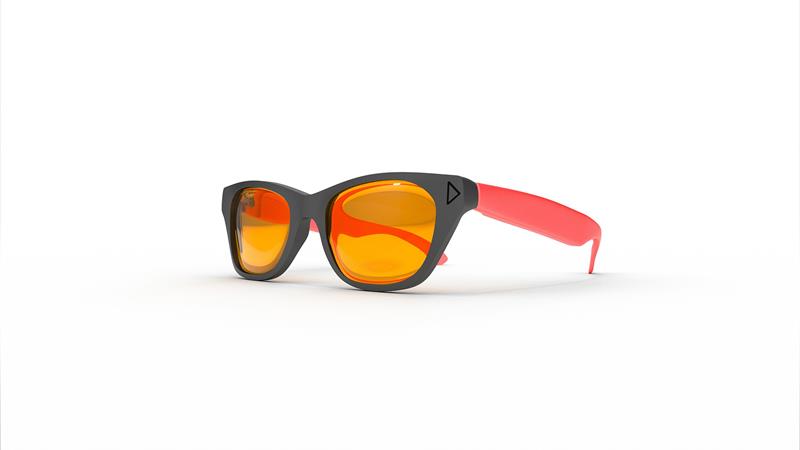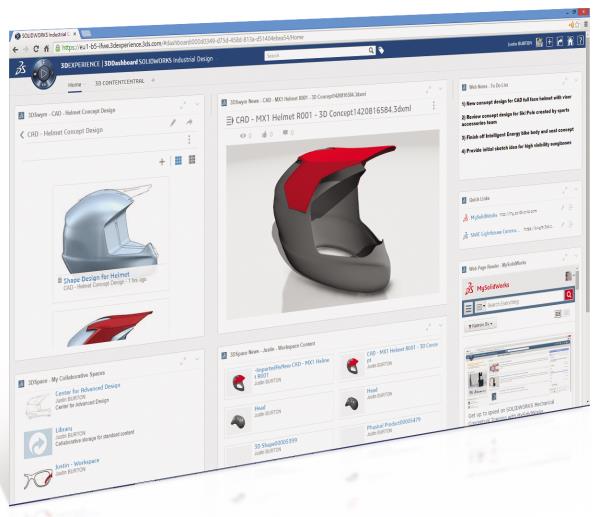SolidWorks Industrial Design is the second package to be launched in the company's 3DExperience platform, following the introduction last year of Conceptual Design, which was called Mechanical Conceptual at its time of launch.

The intention behind these tools is to be able to take a design idea and then be able to immediately make a running start on the design. Currently the quickest and easiest way to make someone else understand an idea is to use pen and paper. But designs can evolve rapidly and in different directions, particularly when more resource, both in terms of time and people, is added. So how do you manage that, quickly and efficiently, based on an initial scribble?
Neil Cooke, SolidWorks' director of Portfolio Introduction, described the priorities of the industrial engineer: "The thing to focus on is to sell or promote an idea, whether that is internally inside your own company or externally to a customer. Is the idea going to work? Can we win the business? And how do we rapidly create the best idea? So we need tools that allow you to capture those ideas, create new designs in a very quick and easy way that you can then iterate as much as you want."
In the industrial design environment there is never enough time and being able to respond to a customer within days, or even hours, can make the difference between winning or losing some business. "You want to make sure that you can react and create these new designs as quickly as possible," said Cooke. "Tools that are out there today can be disconnected. There's lots of individual, different tools for different parts of the industrial design process, and some of those tools make you work by different rules. Rules imposed by the CAD software. So you may find it's going to take a long time to create something because of those rules, which is why we want to remove them."
Industrial Design is intended to remove these constraints and provide a connected collaborative working environment and as such is complementary to other SolidWorks design tools. There are four main areas that encompass the capabilities of the new software: Concept sketching in order to capture an idea as quickly as possible; Freeform design to create quite complex forms; Parametric modelling as that leads into the mechanical design; and Rendering to help present the design idea in its best light.
"All of this is working within a single collaboration, what we call 'single modelling' environment, where it doesn't matter what toolset you want to use to get that product created, just use it, and design in a way that you want," said Cooke.
The software provides social design capabilities and transparent data management that allows engineers and designers to quickly solve industrial design challenges and easily make the transition to mechanical design. Secure and intelligent data storage on the cloud can be accessed anytime from anywhere to share designs, collaborate on ideas, save and evaluate multiple concepts.
The interactive element extends to having an optional on-screen panel to display communications about the design – comments, ideas or endorsements – that could be used for real-time feedback about an emerging design idea.
It is of course intended to be quick and intuitive, using simple features like the ALT key to produce curves and SHIFT for straight lines. Cooke said: "You can do things like change the colour of the sketch from a set of custom colours that I want to work with. This is basically a nice sketching environment we've tried to create. We've even added familiar shortcuts for people. PhotoShop users, for example, will be able to use brackets to thicken or reduce the brush size. We're trying to look at what people are doing today and how we can incorporate that into a 3D environment."

Cooke believes the tools within Industrial Design allow a different way of thinking. He added: "A customer told us 'when I come to do a design I have to think about how I can design it in the product. I have to think about the structure of that assembly, and if I need several components, how many parts do I need to work with? And where do I start? Do I start on the assembly or do I start on the single path?' However, with this, the customer said 'It was great, I don't have to think about that, I just can start designing stuff and I can think about that other stuff later when I've got to a design that I care about', because the last thing you want to do is waste all the time on a product that you don't care about, one you don't want to go forward with."
One early adopter was Parrot, a developer of advanced wireless products, who used the Industrial Design application to successfully design complex 3D shapes for a future line of drones. Henri Seydoux, founder and CEO of Parrot, said: "SolidWorks Industrial Design enabled us to develop an innovative idea in record time without being derailed by challenges inherent to traditional design software."
Enhanced surfacing features allowed Parrot's engineers and designers to create complex 3D shapes that were not possible before, and the transition to mechanical design. The application's social collaboration capabilities also enabled Parrot's teams in France and China to seamlessly work together throughout the process to generate organic shapes in reduced time.
| TECH BRIEFS - BUILDING SIMULATION Comsol's latest version of its simulation software Multiphysics 5.0, includes the 'Application Builder'. This, claims the company, is 'a revolutionary product within the industry that will open up the power of Multiphysics simulation to a much larger audience'. Application Builder expands the use of simulation to a much wider audience. It allows simulation experts to create an application from their Comsol model and using the Comsol Server, share this App with their colleagues or customers. The App can contain only the relevant inputs and outputs needed for a specific study allowing someone with little to no simulation experience to easily modify the information and still get the full benefits of the simulation. The process for building an application starts with a simple command: 'Save Model as Application'. From here, the Application Builder goes through the different steps for building an application, from choosing the parameters that are to be made available for manipulation in the application's user interface to the post-processing and presentation of results most relevant to the application user. Modelling power that has traditionally been geared towards the engineering analyst or expert can now be employed by all members of the organisation. www.uk.comsol.com |





